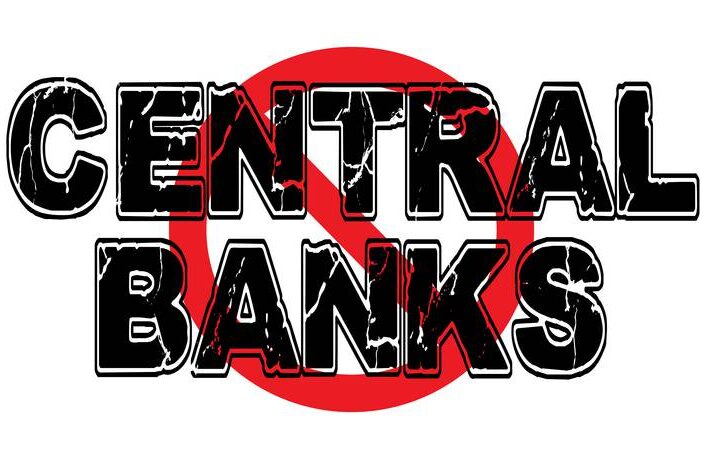This week, my Blues-supporting close personal acquaintance Greg Canavan tweeted a cryptic message about the impact of central banks’ recent interest rate hikes:
‘The lagged impact of rate rises starting to hit. Six months ago, the spread between Aussie 10-year and 2-year govt yields was around 40bps…now its 9bps. Bond market says Aussie economy slowing fast.’
No doubt the slowing Aussie economy is of interest to investors. But I want to focus on the first bit instead. Because the ‘lagged impact of rate rises’ could unleash economic chaos which will make any recession look boring.
You see, monetary policy doesn’t work as fast as you might think. In fact, although there’s plenty of debate on the matter, estimates are that it takes between one and two years for higher interest rates to kick in.
The Reserve Bank of Australia’s rate hikes began — you guessed it — a year ago. This means those rate hikes have only just begun to have their intended effect.
And over the next twelve months, a thirty-eight-and-a-half-fold increase in interest rates is going to smack into the economy, even if inflation were to slow to zero and the economy to slow down in the next six months. Which, you might argue, could be problematic in a long list of ways…
Should, for example, the RBA have only needed to hike rates to, say, 2% in order to bring down inflation, then they’ve rather dramatically overdone the tightening by now. Which would imply they are going to cause a recession, or worse. And, no matter what they do now, that future is baked into the cake for twelve months at least.
Before we explore the implications of this lag a bit more, I better mention what you’re probably thinking: why has inflation already turned the corner if it takes so long for monetary policy to work?
The answer is that monetary policy is not the only factor driving prices. A lot of the inflation was from an energy and lockdown price shock. Indeed, the fact that it took inflation so long to spike in the wake of COVID reveals the inherent delay in how these issues unfold.
US house prices peaked in 2006, financial trouble began in 2007, and all hell broke loose in 2008 if I remember correctly. These issues take years to play out, from cause to effect.
This creates a rather challenging situation for policymakers. Imagine having to set today’s monetary policy based on what the economy will be like in a year’s time…
It’s no surprise they get it so wrong and constantly seem behind the times.
There are plenty of real-world analogies that’ll help explain the phenomenon at play here.
Anyone who has driven a narrowboat will be familiar with the delayed reaction on the tiller. It causes beginners to overcorrect back and forth, leaving an embarrassing wake that spells out ‘I don’t know what I’m doing’ in the water behind them.
Every year, as a new generation of Australians makes the roads unsafe for the rest of us, the police and emergency services begin to visit schools. They make budding V8 drivers wear goggles designed to mimic the impairment of being drunk while driving.
It’s great fun to watch your mates wobble around the school hall. They constantly overreact to the slightest sensory input, resulting in a swaying motion that goes on to become familiar at university, for those who remember it.
Central bankers are operating under the same challenging conditions as narrowboat drivers and drunk drivers. They’re reacting to information about the past with a tool that takes a year to have an impact. The gap is rather wide.
The result is a constant overcorrection in interest rates. During inflation, they hike rates too far, too fast, too late. During a recession, they loosen too much for too long.
It’s also worth pointing out that this is what creates the business cycle. Central bankers constantly overreacting on monetary policy creates the booms and busts we experience. This is ironic given their job is to mitigate that same boom and bust cycle.
It’s much the same problem as in commodities, which is why we have a commodity cycle. High prices lead to overinvestment in mining, leading to a glut, leading to low prices, leading to underinvestment, leading to a shortage, leading to high prices, and then the cycle repeats. The time lag in getting a mine up and running creates the cycle.
When it comes to central bankers, we call this phenomenon ‘behind the curve’. And it’s been especially bad this cycle because central bankers didn’t respond quickly to inflation when it first began. They’re even further behind the curve than usual.
Most people argue this will mean that central bankers will have to hike interest rates higher, faster and further than usual. But I think they’re missing the point. It also means that the overreaction to the inflation will be worse. This is because the time gap between inflation rising and interest rates rising is unusually long.
Having watched my father-in-law confuse the throttle direction on a rental narrowboat, let alone the tiller direction, I know how this ends — badly.
But central bankers are playing games with a lot more than a boat. Their mistakes impact GDP, employment, mortgages, the value of money, exchange rates and, perhaps most important of all, government borrowing rates.
Overdoing interest rate hikes impacts everything in our financial lives, including stock market valuations. Why buy a company when you can earn 4% in the bond market, after all? Especially when the company you might want to buy is going to struggle to pay its debts in a high-interest-rate environment.
Banks are especially badly hit by rapid shifts in monetary policy because they borrow for short periods of time and lend for too long. To simplify the issue a bit, if a bank makes a two-year fixed loan and then interest rates rapidly go up, its cost of borrowing funds has gone up while its profit on lending hasn’t yet ticked over to the new higher variable rate.
As we saw during the financial crisis, those making whopping profits often discovered that their counterparty couldn’t pay up. Borrowers on fixed rates have done rather well for a year, but that is at somebody’s expense. And banks are not good at losing money.
In the US, where mortgages can be fixed for very long periods of time, this issue is far worse.
One last thing before you go. There are reasons to believe that the current interest rate hiking cycle will be an unusually bad mistake.
The delay to raise rates is unusually large, the inflation is unusually high, the humiliation felt by central bankers for unleashing inflation and ignoring inflation is unusually bad, and the period of loose monetary policy preceding the rate hikes was unusually long.
But worst of all, central bankers seem to have forgotten the lesson about monetary policy lags. Usually, once banks start failing, government bond markets need rescuing by central banks, and bankruptcies tick up, central bankers have a change of heart about interest rate hikes. They pause and wait for past interest rate hikes to have their impact.
It’s not like they don’t know about the lag on monetary policy. It’s just difficult to stand there doing nothing for twelve months — waiting for your monetary policy to start kicking in — while inflation keeps rising and everyone complains about the last time you mucked up by keeping rates too low, too long.
But today, in the face of bank failures in the US, an outright meltdown in the UK bond market which required the Bank of England to return to bond purchases to stop, and the US seeing its worst rate of corporate bankruptcies since 2008, what did central banks do in response?
They kept hiking interest rates! And expect to continue to!
It’s like having a drunk at the tiller of a narrowboat. Instead of a wobbly wake, they’ll leave a trail of destruction on the banks.
Until next time,
 |
Nickolai Hubble,
Editor, The Daily Reckoning Australia Weekend

